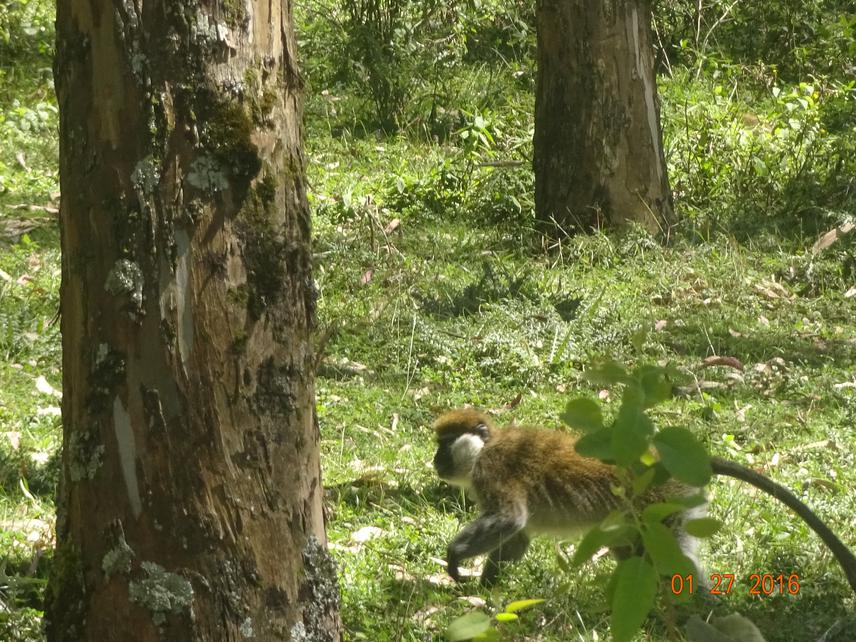Gezahegn Nega Chekol
To understand the nature of inter-specific interactions of Bale monkeys with sympatric Vervet and Grivet monkey and its implication for the conservation of habitat specialist Bale monkey.

Bale monkey Gezehagne.
The Bale monkey (Chlorocebus djamdjamensis) endemic to the Ethiopian highlands east of the Rift valley. The species is estimated to have less than 20,000 km² range but the entire range of the species has never been adequately surveyed. Bale monkey is habitat specialist feeding primarily feed on Bamboo that provide about 77% of its diet. Currently however, the expansion of agriculture and increase of economic value of the Bamboo at national and international scale cause tremendous deforestation of Bamboo forest. While the deforestation left Bale monkey without its main food source, the sympatric Grivet and Bale monkey get a new habitat to invade from lower lands. In the Sidama Mountains, bamboo forest is largely degraded and Bale monkey may face challenge in adapting a new food items other than Bamboo. The other threat for the Bale monkey survival comes from increasing number of Vervet (Chlorocebus pygerythru) and Grivet monkeys (Chlocebus aethiops) in the vicinity of the Bale monkey range. Vervet and Grivet monkey are opportunistic omnivorous extremely adaptable and capable of finding food even in the poorest environments. The bamboo specialist Bale monkey can easily be outcompeted by Vervet and Grivet monkey through exploitative and interference competition.
This study will explore the distribution pattern of the Bale monkey, Grivet monkey and Vervet monkey in the entire Sidama landscape (11,089 km2), land cover changes during the last 40 years, examine the potential exploitative and interference competition between the three species. Hence this study will focus on determining the foraging ecology and the nature of interference competition when ever groups from different species come together (Neutral while group remain isolated; Neutral and individuals from different species form mixed group or aggressive interaction where one of the species dominate the interaction. The foraging ecology will be carried out by scan sampling from focal groups from each species. The nature of interaction will be studied from focal watch on the groups. Forest cover change will be determined by using ENVI 5.0, ARCGIS 10.2 and ERDASS Imagine by comparing forest cover during the last 40 years with in my study range.